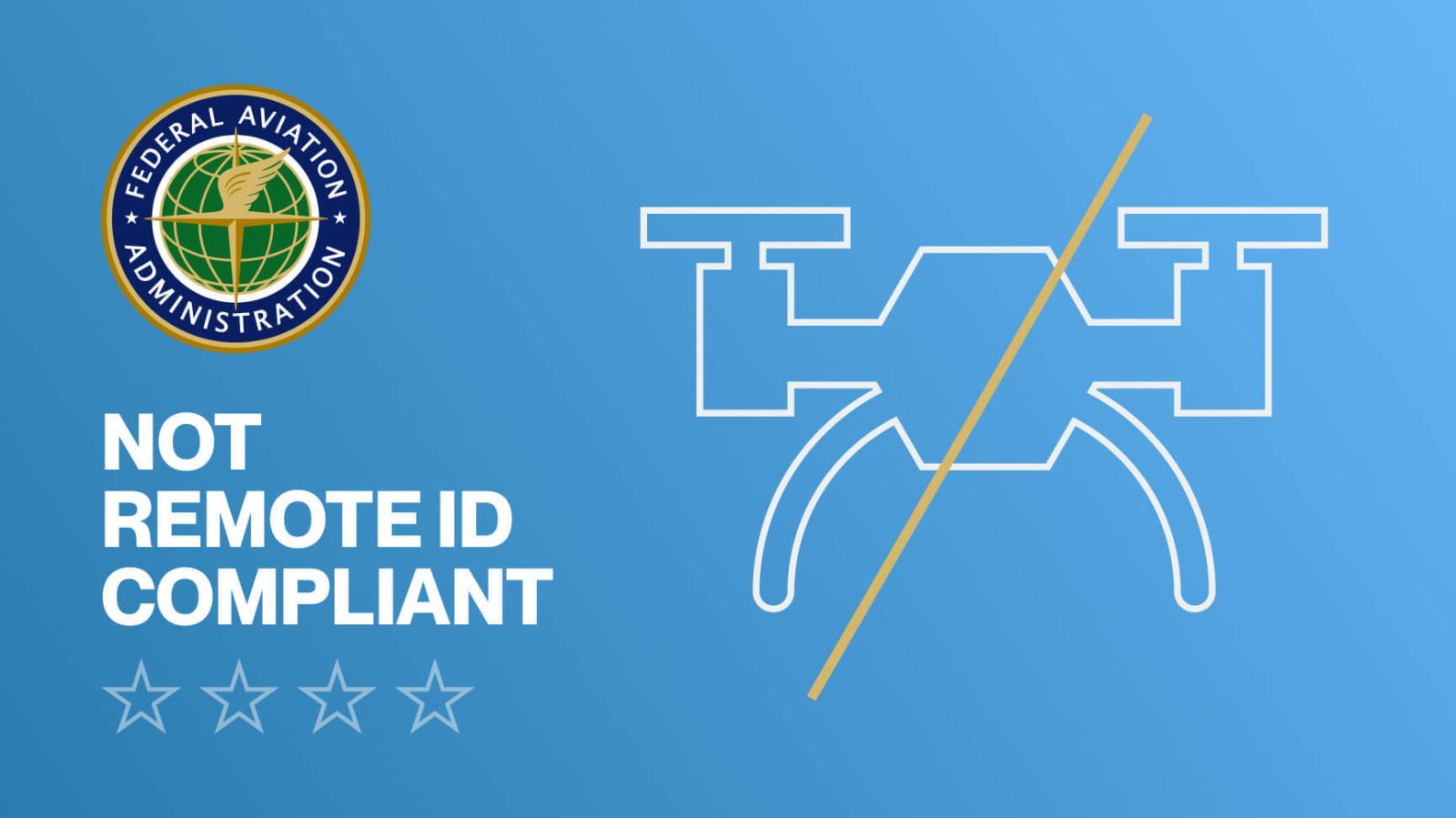
The Federal Aviation Administration’s policy for exercising discretion in determining whether to take enforcement action for drone pilots not complying with its Remote ID rule ended on March 16. However, research has found that over 70% of major drone manufacturers aren’t ready for Remote ID yet.
SkySafe, a drone tracking data and intelligence firm, has uncovered the implementation details of standard Remote ID drones across seven manufacturers: DJI, Skydio, Autel, Parrot, SwellPro, EXO, and Yuneec.
While one of the seven has been found to have followed the implementation perfectly, the results for others range from confusing to potentially “disastrous.” And in one case, the research firm has found claims of support being made where no such support exists.
SkySafe says its team found significant inconsistencies in how drone makers have implemented the specifications outlined in ASTM F3411-22a: “Standard Specification for Remote ID and Tracking.” The team performed several data collection tests within a controlled environment to ensure the data format matched with what was expected and then compared the results to Remote ID broadcasts received across the SkySafe One drone tracking sensor network.
Here are the highlights from the month-long study:
Skydio: Fully ready
Skydio has implemented standard Remote ID technology most accurately and robustly, according to SkySafe. The drone maker uses WiFi Beacon-based broadcasts for their standard Remote ID aircraft, which include all current models in their fleet. SkySafe says Skydio drones use compliant serial numbers and offer no user-exposed method of disabling Remote ID broadcasts in their mobile app.
DJI: Minor issues with Remote ID compliance
DJI has also implemented WiFi Beacon-based Remote ID broadcasts in their standard Remote ID drones. The implementation is relatively robust except for inconsistent use of altitude standards (HAE vs. MSL) as well as home vs. app location. These inconsistencies vary based on firmware versions, leading to varied and unpredictable drone reporting.
SkySafe also points to recent firmware updates for the DJI Mini 3 and Mini 4 Pro models that prevent the aircraft from transmitting Remote ID while flying with standard batteries. The weight of standard batteries keeps the drone’s total weight under 250g, which means this won’t cause any issues for a recreational flier, but it will lead to non-compliance for any Part 107 pilot using this configuration.
Also read: DJI Avata 2 drone hits FCC ahead of rumored April launch
Parrot: Needs improvement
While Parrot also uses WiFi Beacon-based Remote ID broadcasts, their implementation is based on the legacy French DRI standard, so older drones broadcast non-compliant ASTM identifiers. SkySafe found that 43% of Parrot drones broadcasting Remote ID data had non-compliant identifiers — starting with the prefix PI040 instead of the FAA-approved 1588E prefix in the DoC.
SkySafe also found that Remote ID is configurable/mutable in the mobile app on some older models, which gives pilots the option of disabling Remote ID broadcasts on drones that are supposed to be standard Remote ID drones.
Autel: Major flaws with Remote ID implementation
Autel’s implementation of the Remote ID standard is the most broken seen to date in SkySafe’s research. While Autel started rolling out pieces of a WiFi NaN implementation in their firmware early on, somewhere down the line, they decided to opt for misconfigured WiFi Beacons featuring a fixed MAC address across all drones and an SSID of “default-ssid.”
SkySafe found that Remote ID support is enabled or disabled depending on firmware versions, and support is configurable/mutable in the mobile app on some older model drones, allowing pilots to disable broadcasts if they choose. Autel drones also use incorrect ASTM identifiers on most drone models.
SwellPro, EXO, Yuneec: Not compliant
While SwellPro has claimed on its website that support will be ready by March 2024, it appears they would either partner with a company that makes a Remote ID add-on module or just recommend customers purchase a particular module.
Meanwhile, EXO products are marketed as US-made but rebranded Hubsan drones. One of EXO’s standard Remote ID drones had no Remote ID (or FCC) compliance markings or serial numbers anywhere on the product packaging, exterior, or controller. No transmission of any Remote ID types was detected, either.
Yuneec, on the other hand, has announced Remote ID software updates in the past but never actually released any. Instead, the drone maker has partnered with Czech Remote ID module creator Dronetag and included its products in the Yuneec Certified Accessory Program (YCAP).
The FAA’s original deadline for Remote ID implementation was in September 2023 for drones over 250 grams to broadcast identifying and positional information while in flight. That deadline was extended to March 16, 2024, to give manufacturers and operators more time to get ready.
According to the FAA, more than 1 million drones are registered in the United States today, with nearly 3.5 million total drones currently in use. The industry’s growth depends on the authorities’ ability to differentiate authorized drones from those that may pose a threat. Remote ID is often likened to a digital license plate that provides a means for public safety and other authorized officials to identify the owner of a small drone if flying in an unsafe manner or a restricted area.
The scope of flawed Remote ID implementations discovered by SkySafe’s research team essentially brings up the question of culpability: Who is at fault if a pilot is found to be operating a standard Remote ID drone that doesn’t follow the required specifications? Who will hold manufacturers responsible for implementations that do not comply with the ASTM standard for Remote ID?
Read more: Which DJI drones have internal storage?
FTC: We use income earning auto affiliate links. More.






Comments